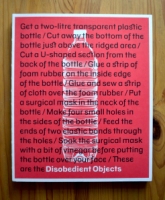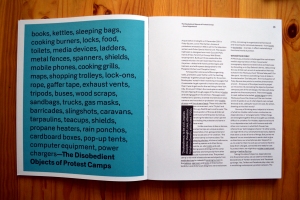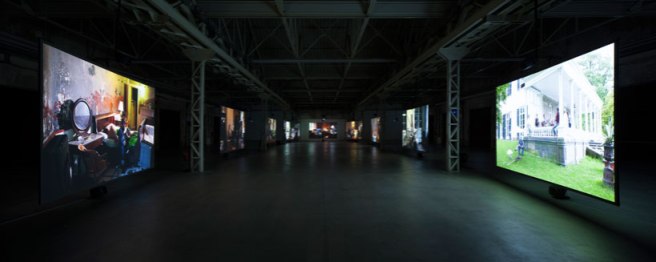The visual message is elusive and the interpretations remain bound to a collective memory of society in which it is formed; in light of my current exploration into the ontology of meaning I felt impelled to visit the V&A exhibition ‘Disobedient Objects’. The exhibition coalesced a range of themes that I had previously deliberated over, such as the malleable nature of meaning, the fictitious dogma of history and the vision of a mass psychology. ‘Disobedient Objects’ strove to disregard the elitist foundation of history so often framed by selective inclusion and ‘also told from above’ (Flood and Grindon, 2014), in its place highlighting the counterpower of the populace. Bearing in mind my earlier posts on Dr Jonathon Clark’s presentation whereby I became familiar with the abstract concept of history, Croatian artist Sanja Iveković and her motivation to recall forgotten individual stories and certain elements found in Duncan Campbell’s ‘It for Others’, ‘Disobedient Objects’ was an appropriate testament to this conjunction of ideas.
In thinking about the spatial organisation of the disobedient objects exhibition, the starting point has been the idea that these artefacts are defined not by their form, but by their political efficacy. Their disobedience only becomes apparent when they are considered in context.
Catherine Flood and Gavin Grindon | Disobedient Objects
In Dr Jonathon Clark’s presentation in October he spoke of the ‘Mysterious Monuments’ found in John Constable’s paintings and their following appreciation in spite of their function becoming null and void. In the same way that observers imprinted significance upon the archaic artefacts found in Constable’s paintings, the objects shown in this exhibition have attained value beyond their purpose. The red square chosen by students protesting against the proposed raise in university fees in Quebec and red feather later adopted as a symbol of solidarity (illustrated in gallery), in Poland individuals wore power resistors to indicate resistance to the government and support for pirate Radio Solidarity. (Flood, 2014) I found that in addition to the voluminous objects on display with their contextual connotations emerged this idea of entanglement and actor-network theory, every one of the objects shown and their manipulated subtexts were dependent on the social movements that embraced them.
Different local contexts produce different forms of resistance. The strategies activists develop and the objects they make depend on the cultures they are part of and the particular struggles they face. But movements also borrow and adapt designs from each other. As designs circulate, they connect movements, crafting global networks and intersections between social struggles.
Catherine Flood and Gavin Grindon | Disobedient Objects
In the accompanying publication the curators spoke of the challenge they faced when constructing the exhibit, they accepted that placing these objects in the museum would obscure the emotional context that was central to the objects on display claiming value beyond purpose. With reference to these objects being removed from their social constructs in political contestation, one remark stood out in relation to my own exploration into the nature of meaning and the entanglement that connotations have with social constructs, “they [objects] are like characters in a play that have wandered off stage. Only those who know the play can fully catch their meaning” (Flood, 2014). This analogy chimed with an epiphany I had regarding the anamorphic image and the particular vantage point required in order to reconstitute the unfamiliar, those not engaged with the inducements that evoked these disobedient objects are unlikely to fully understand their meaning.
I have not only been interested in the impetus for ‘Disobedient Objects’ but also felt an admiration for the method in which it was conveyed. Even though the objects had been detached from the cultural upheavals from which they were reconceptualised, the commitment that the curators displayed and acknowledgement to the abstract nature of meaning proved indispensable in portraying the ‘disobedient objects’. The calculated curation of the exhibition and the notable attention to detail in the matter of articulating a story for each object made the exhibit all the more conceptually obliging. At every stage of the exhibition I found creative provisions that sought to reinforce the collective ensemble of objects beyond their physical form and introduce the circumstantial reasons for their ‘disobedience’.
FLOOD, C and Grindon, G (2014) Disobedient Objects. London: V&A Publishing.
Publication:


Exhibition:




